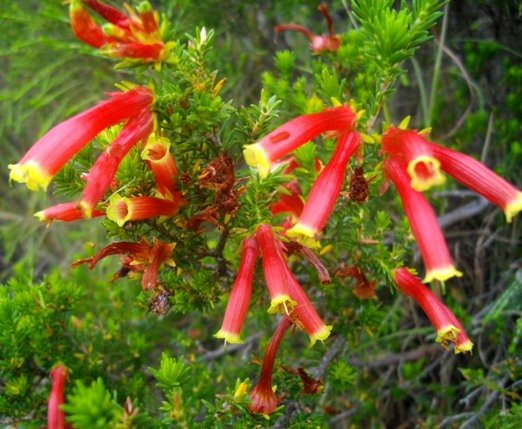Erica densifolia

Erica densifolia is an erect shrub with woody branches that do not resprout after fire. It grows to heights of between 1 m and 1,5 m. The leaves grow variably, in threes around the stem or densely imbricate and ascending, incurving or spreading. Leaf shape also varies, even on the same plant; some are ovate or lanceolate, while others are linear, sometimes marked with grooves. The leaf margins curve downwards, sometimes closing the gap at the back, sometimes not. Young leaves are often hairy.
The sticky flowers of this Erica are mostly solitary at the tips of small side-branches that cluster near the ends of the erect stems. The flowers are long (2,4 cm to 3 cm), tubular and slightly hairy with shallow, rounded yellow and green lobes that open slightly. The flower tubes vary in colour from pinkish red to orange-red. The dark anthers are inside the tube, deeper than the lobes, while the long style is exserted against the top of the slightly down-curved corolla tube. Flowering occurs throughout the year barring winter.
The plant grows in the Swartberge, the Langeberge and other mountains of the southern Cape from Swellendam to Humansdorp (Baker and Oliver, 1967; Vlok and Schutte-Vlok, 2010; iSpot).

